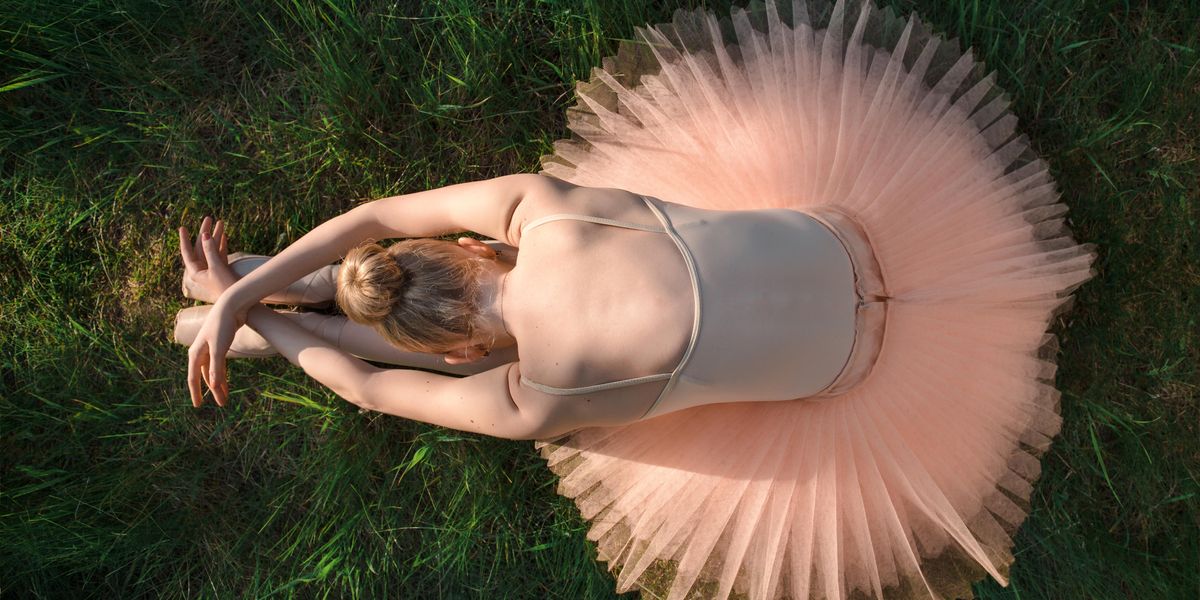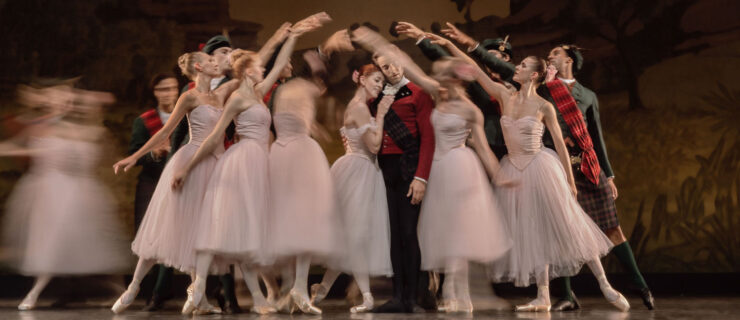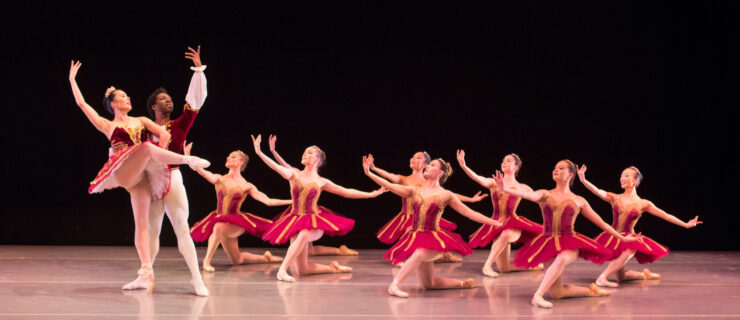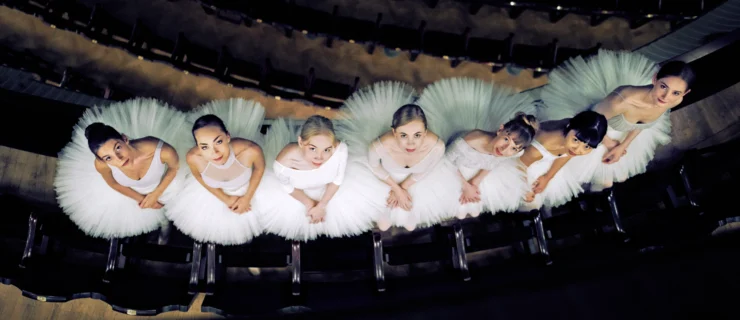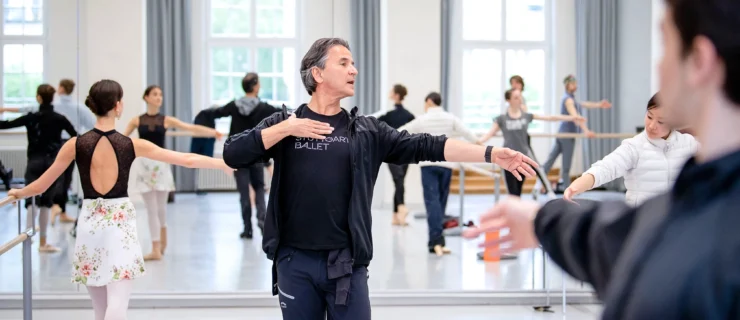Under Her Spell
Erica Cornejo is exactly the kind of dancer you want in your company.
Who wouldn’t dream of working with a ballerina with vivid imagination, an infallible work ethic, a fine-tuned musical ear, a no-divas-here attitude, an incredible jump, intuitive dramatic ability, pure classical line, the ability to take on virtually any role in the repertoire and a captivating onstage persona and beauty that reflects her offstage warmth?
Formerly a soloist with American Ballet Theatre, Cornejo, 30, has performed as a principal with Boston Ballet since 2006. When she danced with ABT, many felt lesser talents were being promoted while Cornejo’s true ballerina potential was sorely overlooked. But New York’s frustrating loss has turned into Boston’s triumphant gain.
Mikko Nissinen, Boston Ballet’s artistic director, praises the dancer he nabbed. “Erica is so luminous—she radiates onstage,” he says. “There is ease and spontaneity in her dancing. She has such a great attack and a directness with the audience that’s refreshing. She also happens to be one of the nicest people to work with.”
ABT fans have fond memories of Cornejo in a range of wonderful smaller roles: the spunky cowgirl in Rodeo; performing the waltz in Les Sylphides; a super-physical phenomenon in William Forsythe’s workwithinwork. Jennifer Dunning, then a dance critic at The New York Times, recalls Cornejo as a “breath of fresh air with a sense of simplicity and openness—physically and stylistically.”
But, brilliant as Cornejo was, she always seemed like the bridesmaid who was overdue to catch the bouquet. Her natural sweetness never included the kind of temperament prone to nagging a director for principal status. “I prefer that if someone thinks I can do principal roles, it comes from them,” says Cornejo. “I don’t need to go and say, ‘I have to do this principal role.’ I know what I can do.”
Cornejo’s confidence that she had more artistry to offer trumped any insecurity about being overlooked at ABT. “You don’t always know the reason you don’t get a part,” says Cornejo. “If you don’t get what you want, it doesn’t mean you are a bad dancer. Decisions can be right or wrong. You have to keep working for yourself with all your heart.
“I never got anything like that,” she adds, snapping her fingers. “I worked really hard. Ballet is a difficult career. To be a great dancer, you have to be very strong mentally.”
In Boston, Cornejo has finally performed the ballerina roles in many of the ballets she coveted: Giselle, Romeo and Juliet and La Sylphide. “She excels in most everything she does,” says Nissinen. “She was wonderful as Kitri in Don Quixote and recently was excellent in the ‘Emeralds’ section of Jewels. Talk about two totally opposite roles!”
Cornejo’s considerable gifts began to develop early. Born in Mercedes-San Luis, Argentina, she was raised in a modest household in Buenos Aires. Her father served in the military and her mother was a homemaker who loved music and dancing. But it was Cornejo’s idea, at age 4, to start dance lessons. “I hadn’t seen any ballet performances,” she says. “But I remember in kindergarten seeing girls doing barre and thinking, ‘I want to do that.’ ” Her mother enrolled her at the Arts Institute of the Colón Theater. Its rigorous training program included ballet, Spanish dance, modern and folk dance. It gave her a strong foundation that has served her well in terms of technique and stamina. Her brother Herman Cornejo, the renowned principal with ABT, followed her lead into dance classes.
At 14 she won a gold medal at the Second International Ballet Competition in Buenos Aires for her performance in the Sugar Plum Fairy variation. A year later, Julio Bocca hired Cornejo to dance in his Ballet Argentino. She toured five continents with the company and performed contemporary works, tango pieces and classical ballets such as his Don Quixote Suite.
When dancing in New York with Ballet Argentino, she remembers, “I felt this great energy that I’d never felt before. I wanted to try and get lucky and join ABT.” She landed an audition and was hired by John Meehan, then the director of ABT II. After less than a year in the second company, she joined the main company.
One quality that immediately made Cornejo stand out was her amazing jump, which has a strength that plenty of men would envy. She was the woman in the Swan Lake pas de trois who could execute a genuine entrechat six or launch into a breathtaking grand jeté that didn’t look like the typical hiccup. For those who wonder what her secret is, she speculates it could be genetics, since her brother has one of the best jumping techniques in ballet history. “I think I was born with it,” she says. “Sometimes when I am jumping I don’t feel like I have to exert much to get into the air. It’s a weird energy in my legs. I feel rested when I jump.”
At ABT, Cornejo hung out with her “Spanish group,” including Carlos Molina, a soloist from Colombia. “I was always shy with the guys, but I was comfortable talking to him about anything,” says Cornejo. “Slowly it turned into different feelings.” In 2004, Molina was offered a principal contract with Boston Ballet, and the two commuted to see each other on weekends, a trek that grew tiring over time. Eventually he proposed—in front of the fountain at Lincoln Center. “It was very romantic,” says Cornejo, adding that they still do something every day to keep their relationship flourishing. The couple married in 2006. By then Cornejo was feeling the itch to leave ABT and decided to audition for Boston Ballet.
When Nissinen offered her a principal contract, new opportunities abounded. “When I had the chance to do Giselle here … ahhhh, I was so happy,” she says. “Usually people see me as powerful, with all this technique—jumping and turning. Giselle is about the style of the arms, the expression, doing everything like you are floating.”
Dancing John Cranko’s Romeo and Juliet proved to be the most rewarding experience so far, and a natural fit with Cornejo’s acting abilities. “Juliet was so me that I didn’t get nervous at all. The story requires so much from inside, and that’s good because I’m very emotional.”
Last spring, Cornejo got a chance to show a very different side—the lyrically Gallic role created by Mimi Paul in Balanchine’s “Emeralds” section of Jewels. Paul had seen Cornejo in class at Steps on Broadway in New York and urged Sandra Jennings at the George Balanchine Trust to cast her. Paul told Cornejo to dance her solo as if she were dancing in her own world. “In the walking pas de deux, it’s like I’m thinking about someone who’s not there—it’s a dream I am having and remembering him,” says Cornejo. “And I can tell you, it looks pretty easy—it’s so hard! You have to make it light, like nothing is happening.”
While Cornejo has prized the opportunities she’s been given in Boston, she takes little for granted. She has had her share of injuries—a hip muscle tear, a disc problem in her lower back. Reorienting her body has made her better, smarter and stronger. “I have had to learn new ways to dance again,” she says. “I cannot kick my leg the way I used to. You have to respect your body, try to listen. Make the good outweigh the bad.”
It’s that essential attitude—optimism tempered by solid grounding—along with talent that has prevailed over earlier disappointments and allowed her to blossom as a ballerina with Boston Ballet.
Finally, the bridesmaid has caught the bouquet.
Joseph Carman is a New York-based writer and author of
Round About the Ballet.
